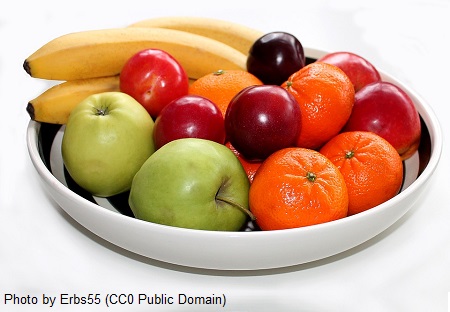
A Good Body Is More Than Just Physical Training
Looking back to when I was in the military, I remember we used to PT so much that the idea of watching my diet never entered my mind. I bought into one of the pervasive myths inherent to physical fitness – that if someone exercises long and hard enough, they can eat whatever they want and remain healthy. Granted, there are many examples where it appears that a person gets away with eating poorly, however, digging deeper, the person often has underlying health issues, such as high cholesterol.
Even if you are in good cardiovascular shape, if you are carrying an extra five or ten pounds of fat on your body as a result of a poor diet, it is not possible to achieve your peak performance level, and you will feel the effects when you most need to access your body’s energy reserves. Your goal should be to achieve as much strength, leanness, and cardiovascular fitness as safely and healthily as possible.
(Scroll down to read more.)
Advertisement (Marine Corps Boot Camp Film Series)
For more information, visit www.DarkDawnMovie.com.
Transform Your Diet Slowly
If your diet is currently very unhealthy, it is best not to transform it overnight. Changing your diet “cold turkey” could lead to significant withdrawal symptoms and cravings, and in short order the temptation to eat junk food and sugar will emerge with a vengeance.
Instead, your goal should be to change one bad habit at a time. For example, if you eat three unhealthy meals a day and cookies in between for snacks, start by swapping out one of your unhealthy snacks for some fruit. That should be your only change for a few weeks until the time arrives when grabbing fruit becomes second nature.
Once that first snack is permanently altered, next consider adjusting breakfast. Substitute unhealthy cereal with a whole-wheat based brand of cereal. Now you have two good habits per day, even though the rest of your diet is unhealthy. Keep this process going, where you swap out one bad habit at a time, until you have reached an optimum diet. This is much more preferable to changing everything at once, which may work for a few days, but will most likely result in a relapse soon after. By ensuring that good eating habits form one change at a time, you will soon find that your entire diet is healthy without having felt many withdrawal symptoms.
You can aim for a daily intake of 2000 calories and adjust your caloric levels accordingly depending on the amount of exercise you are doing and how much weight you are losing (or gaining). If you have to lose significant amounts of weight, do not starve yourself. Starvation diets are unhealthy and can lead to medical problems. Instead, start with a normal caloric intake and make small corrections as necessary. As your body gets used to healthy eating and exercise, it should become easier to determine how to adjust your diet and exercise regimen.
A Reasonable Goal
If you can eventually achieve something similar to the following diet on a consistent basis, you should be good to go. Remember, the key is to stay away from simple sugars and junk food, eat lean meat, fruits, and vegetables, and drink sufficient amounts of water.
| Meal | Food | Serving Size | Calories |
| Breakfast (0700) | Grain Cereal with Skim Milk | 2 cups cereal, 1/2 cup milk |
380 |
| Extra Large Egg | 1 | 80 | |
| Orange Juice | 1 cup | 100 | |
| Morning Snack (1000) | Medium sized Apple | 1 | 80 |
| Lunch (1200) | Caesar Salad | Large sized | 600 |
| Afternoon Snack (1500) | Granola Bar | 1 | 180 |
| Dinner (1800) | Lean Chicken or Fish | 10 ounces | 400 |
| Skim Milk | 1/2 cup | 43 | |
| Evening Snack (2100) | Raisins | 1 box (1/4 cup) | 130 |
| 1993 |
Of course you can adjust the above plan as necessary, replacing foods as you see fit, so long as those foods are as healthy and contain roughly the same caloric content as the ones you replace. Notice that there are six meals spaced out evenly throughout the day. This is done in order for your blood sugar level to remain constant and so that you have few insulin spikes (insulin is known to help the body store fat). Eating large meals or copious amounts of sugar causes the pancreas to produce more insulin than eating smaller, healthier meals. By spacing out small meals throughout the day, insulin generally remains at a constant level and your body is less inclined to retain fat.
Water, Calories and Exercise
You should drink sufficient amounts of water. Usually eight to ten glasses of water per day is recommended, however this number varies depending on several factors including your exercise level and food intake, the climate and altitude in which you live, and your body weight. You can consult many on-line resources to determine how much water to drink per day. However, eight to ten glasses is usually a good rule of thumb.
You should adjust your caloric intake up or down as necessary to accommodate the amount of exercise you are doing. If you find that you are losing too much weight, consider increasing your caloric intake. If on the other hand, you feel that you are actually putting on weight, consider decreasing your caloric intake. However, avoid falling below 1500 calories per day, and instead ratchet up your exercise workouts if necessary.







